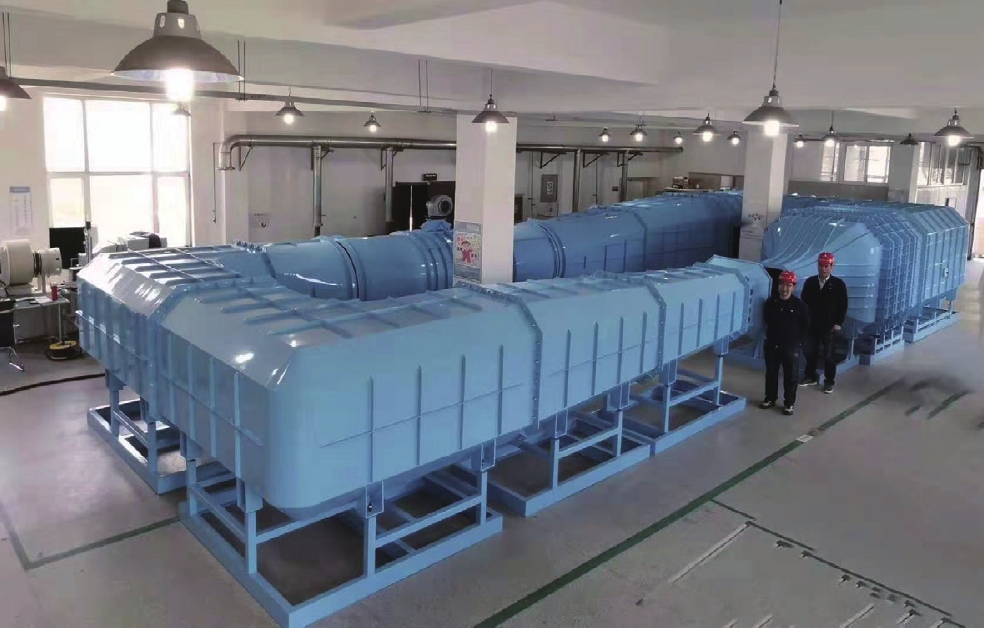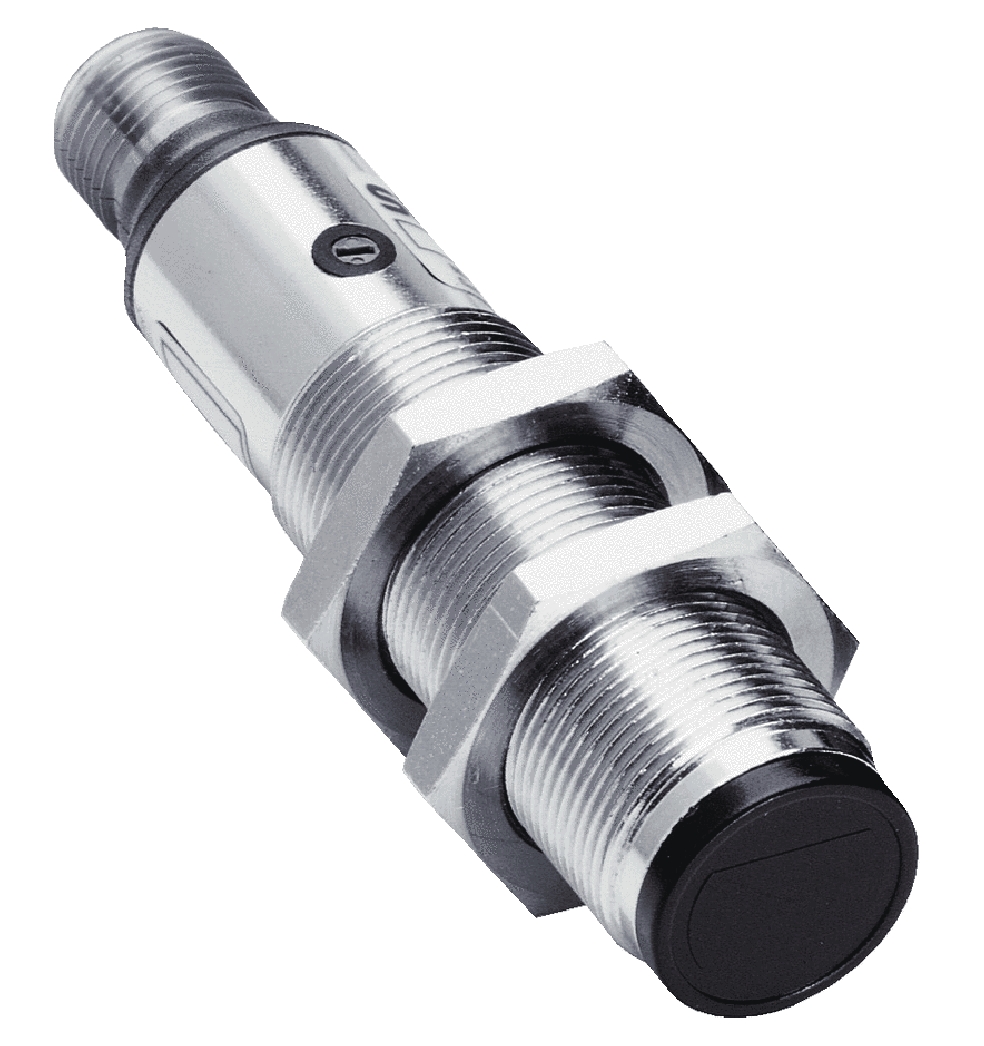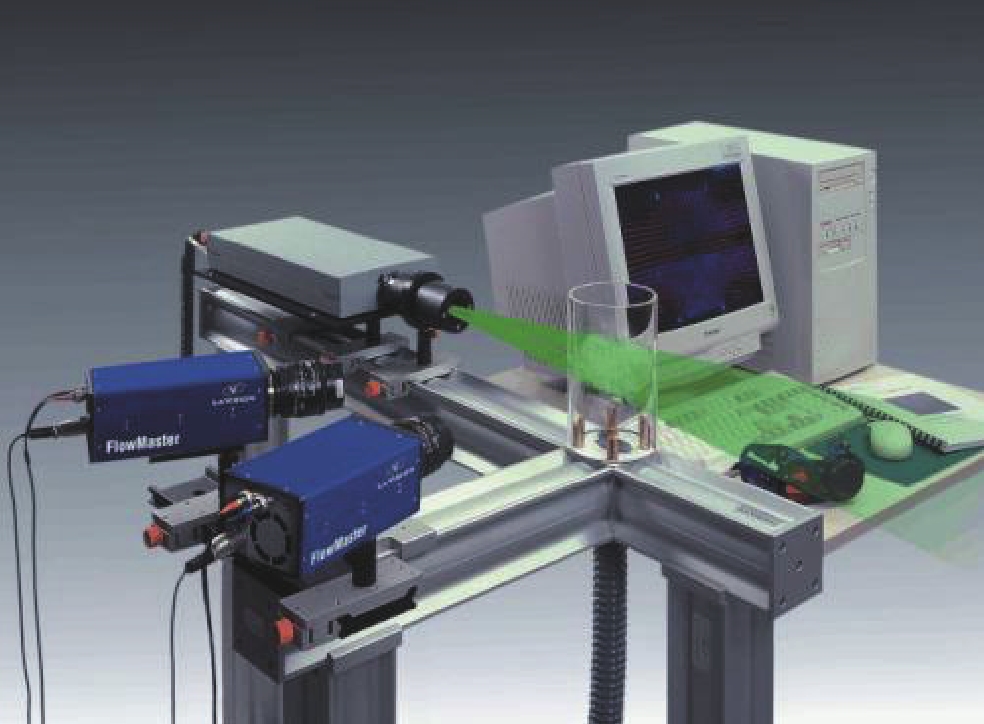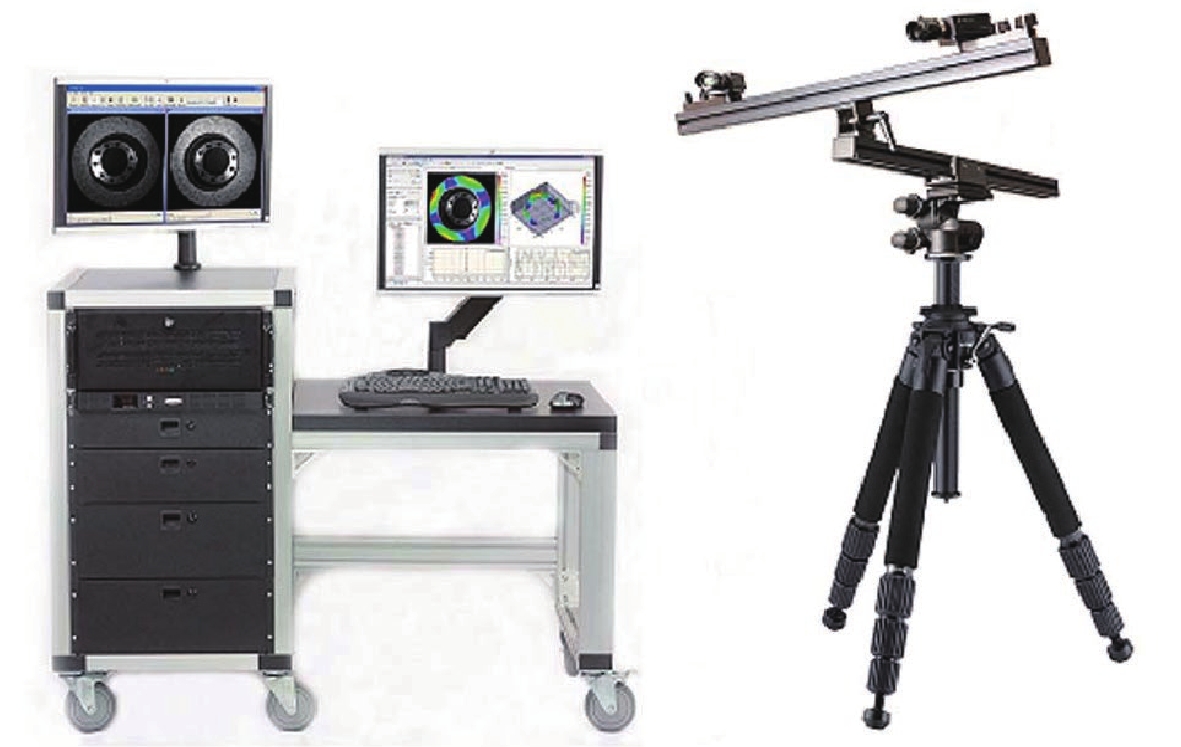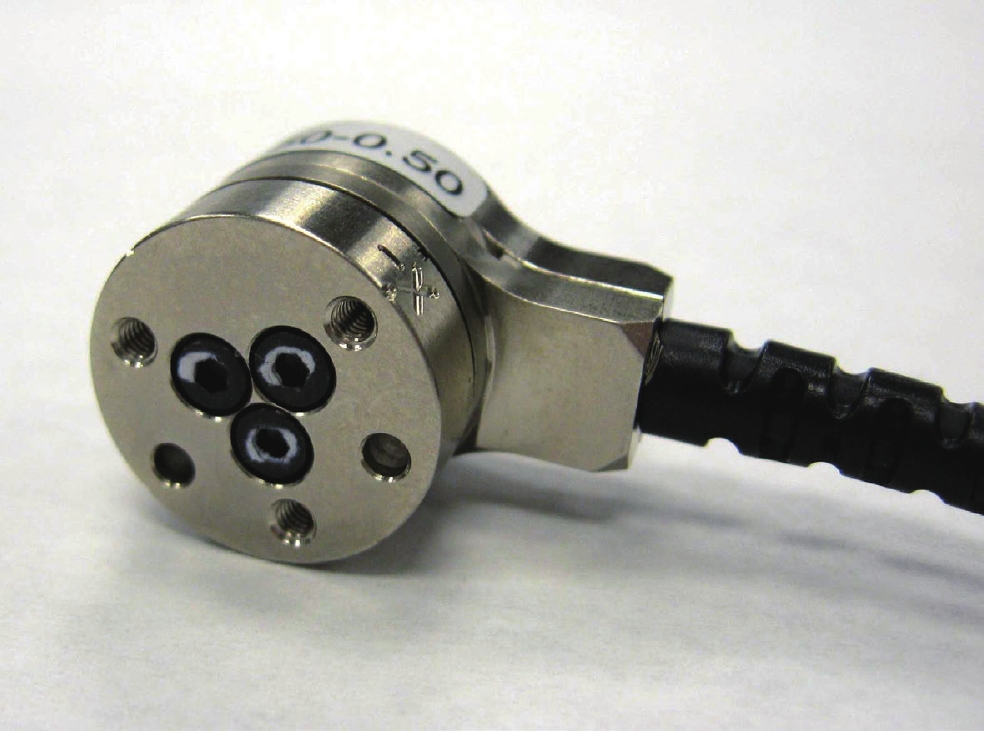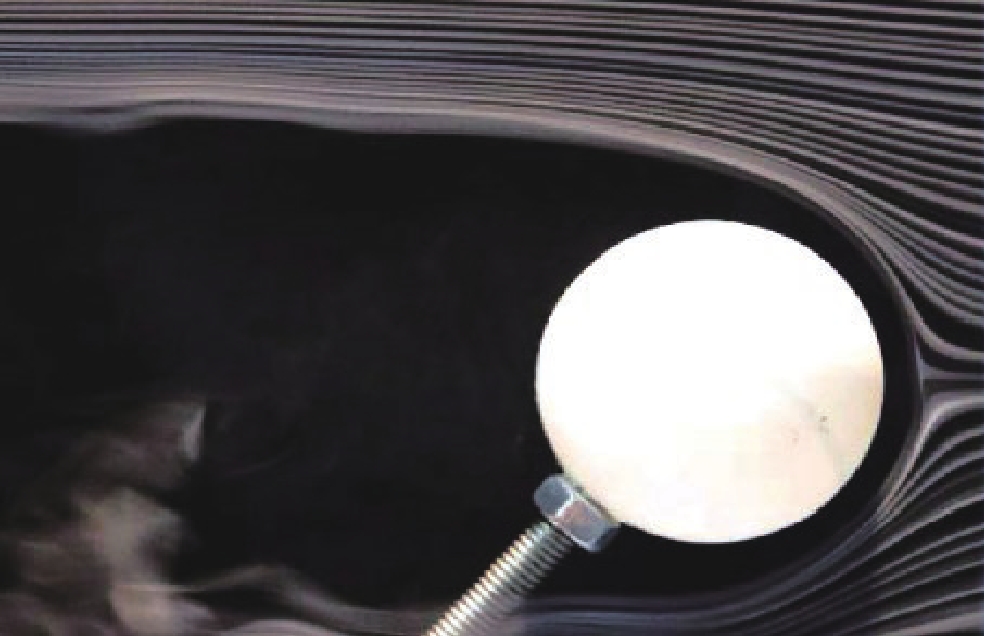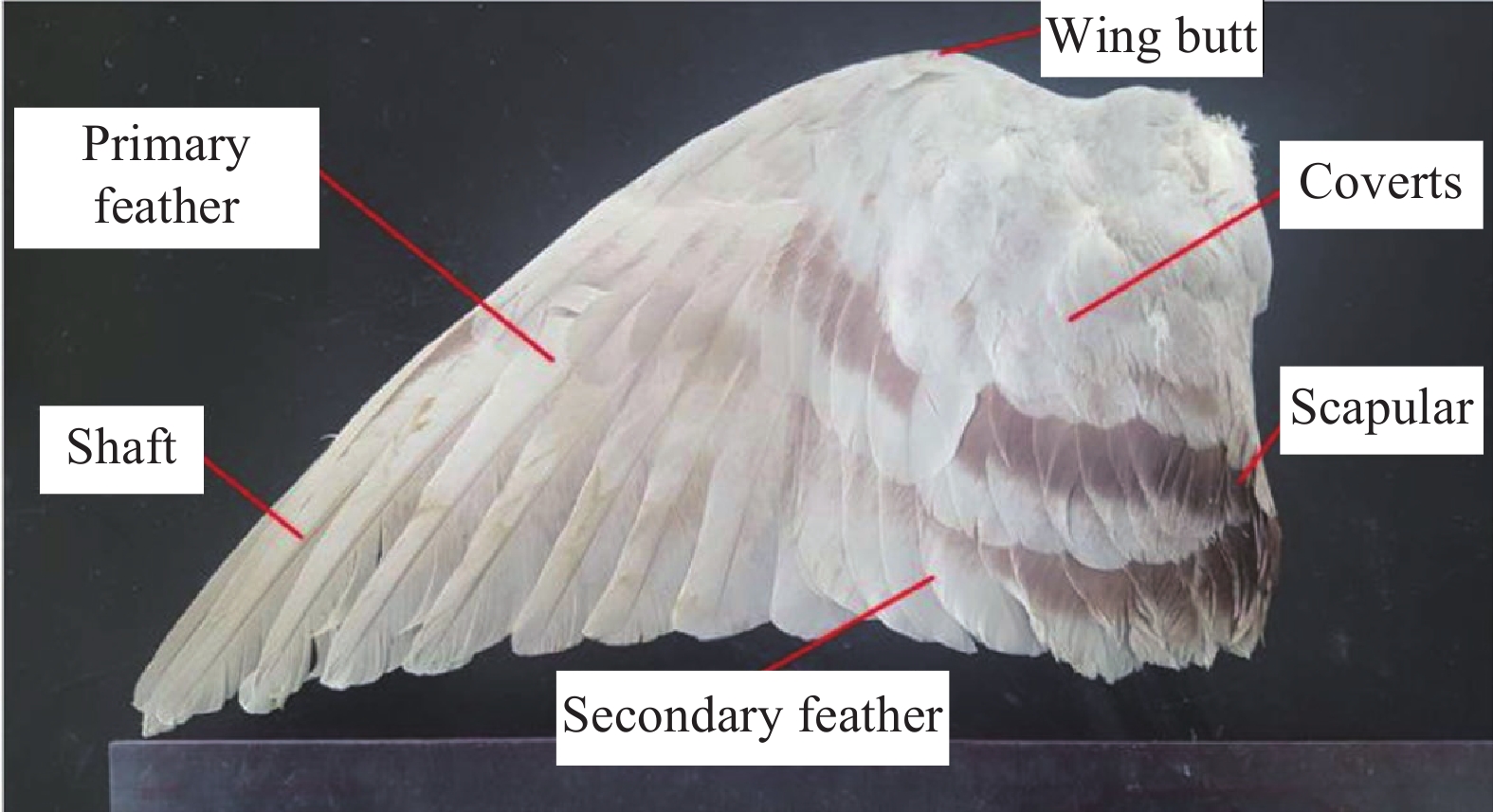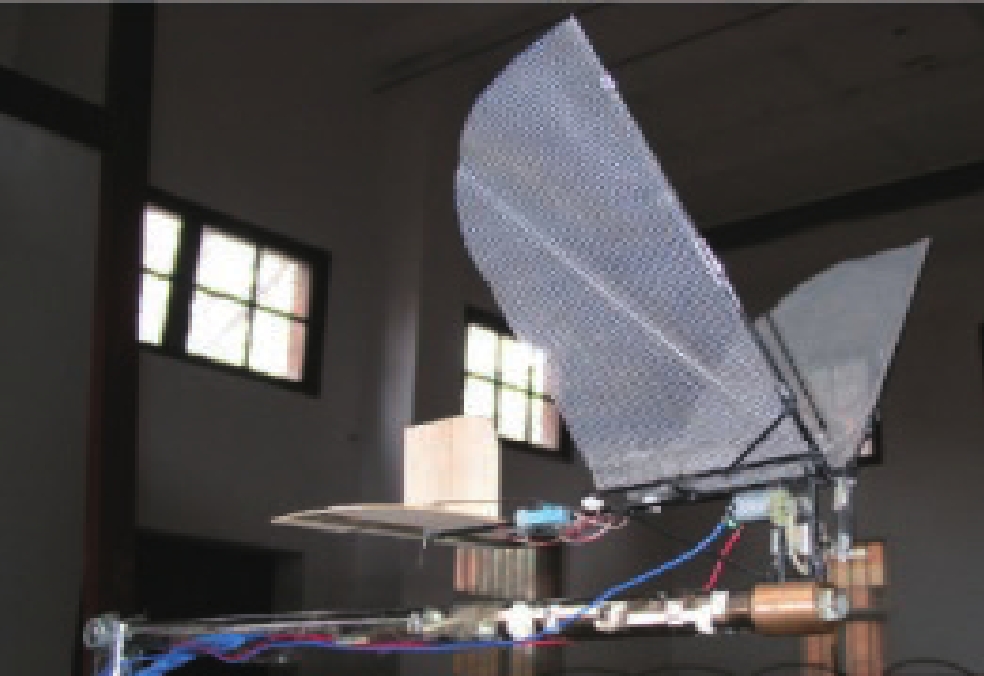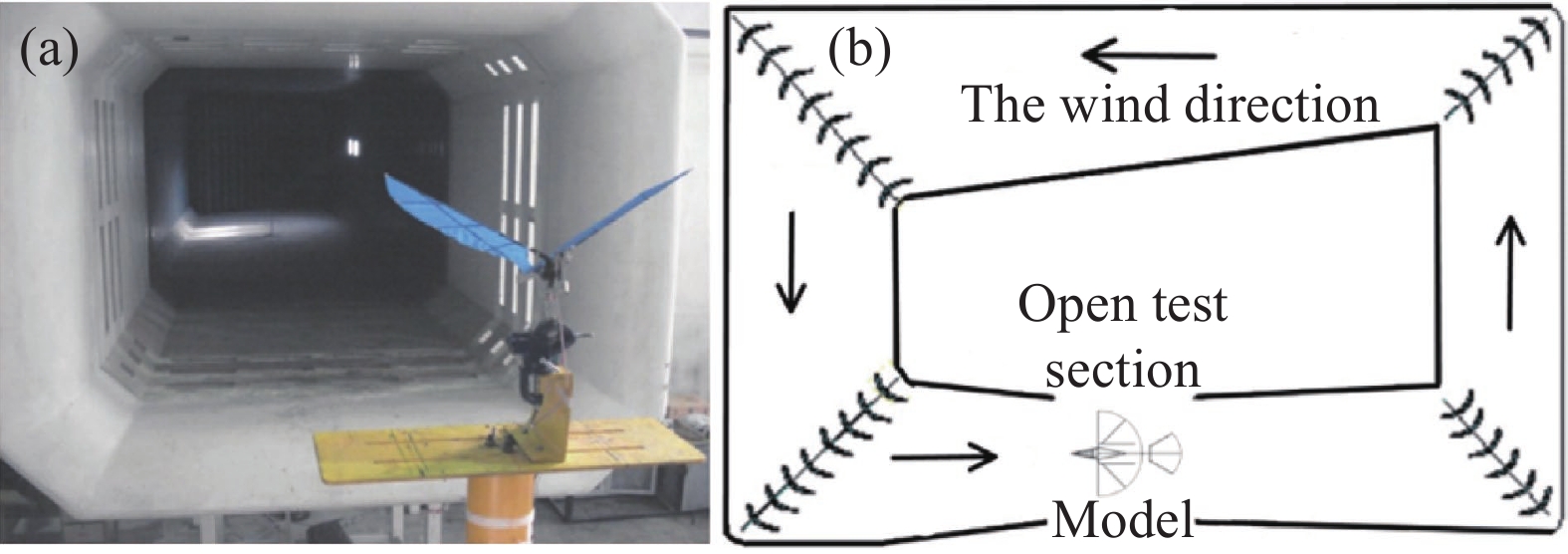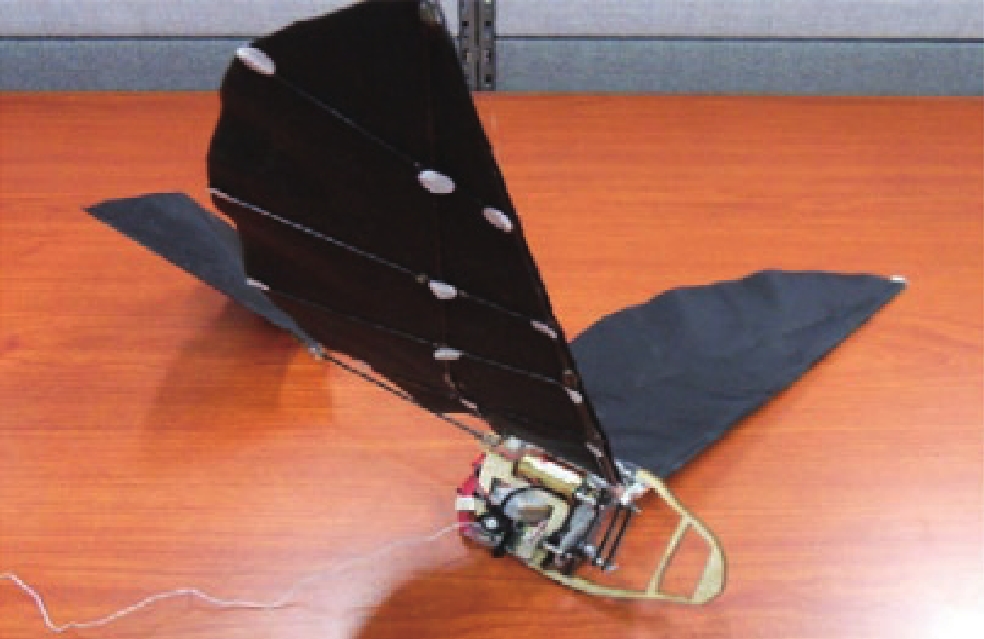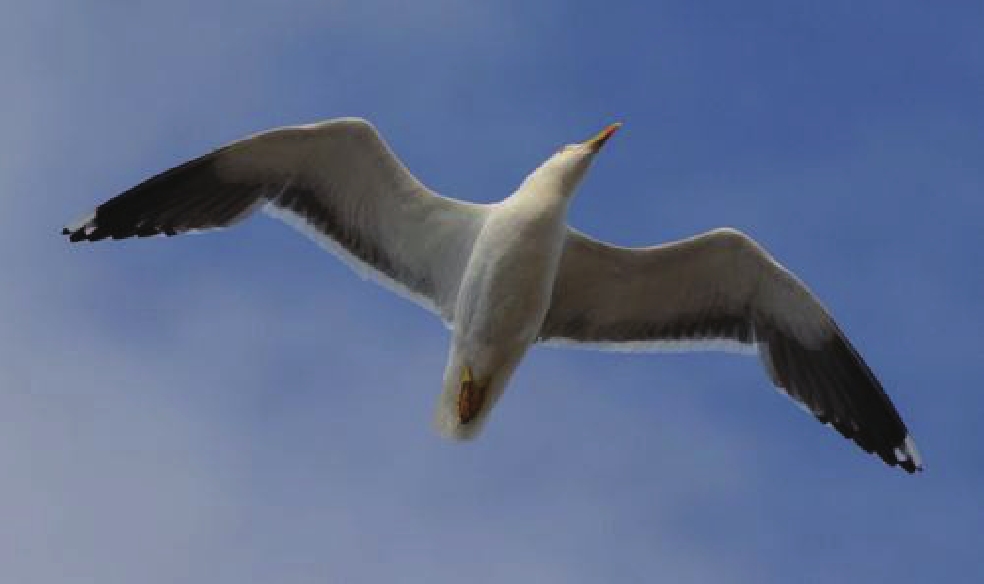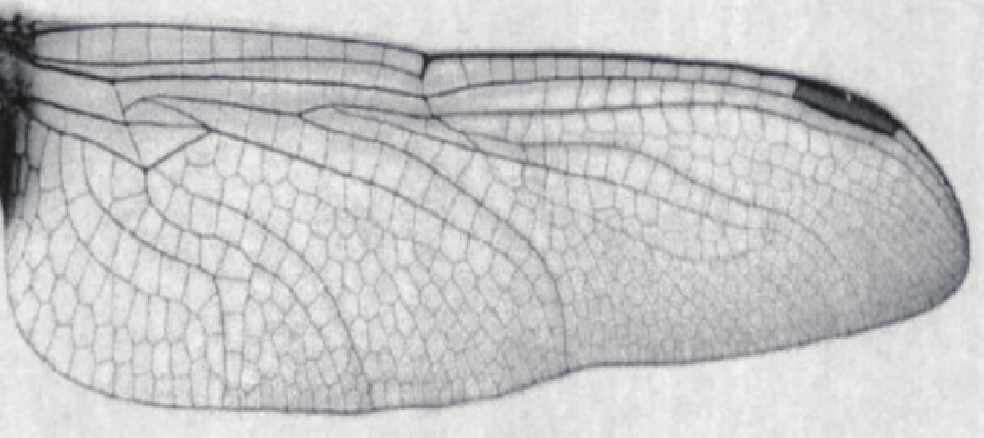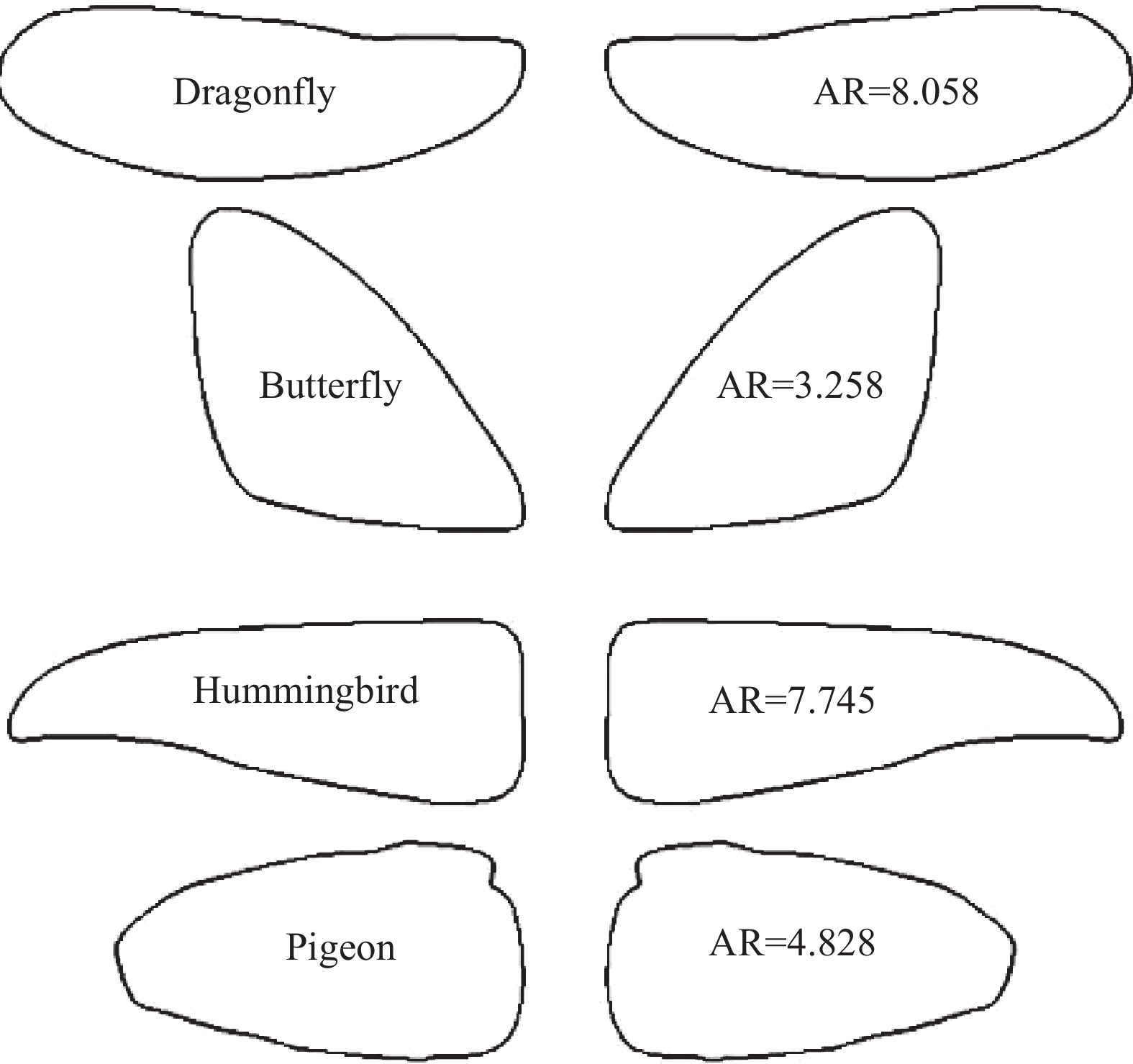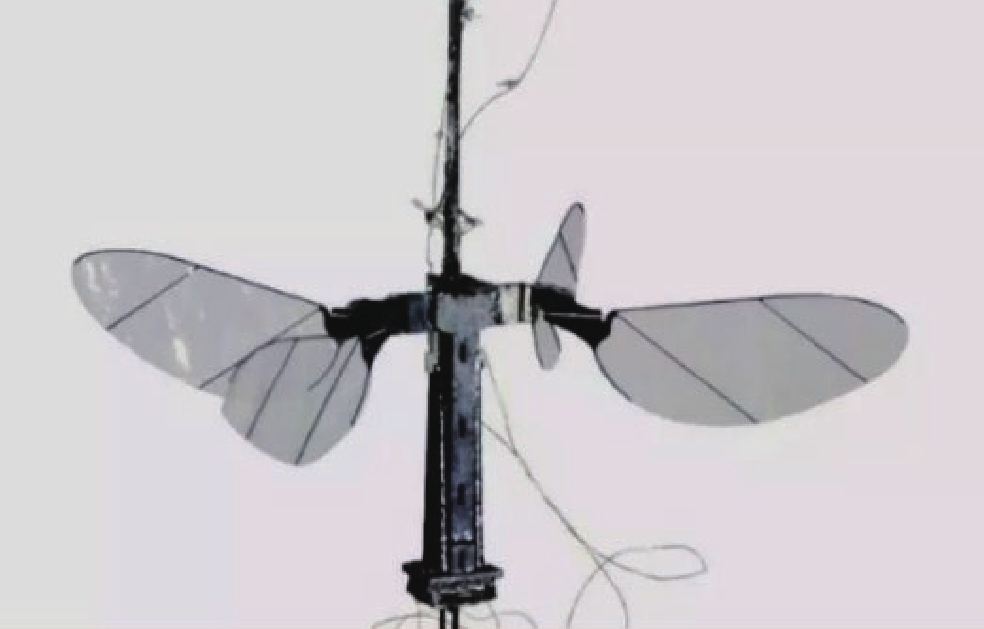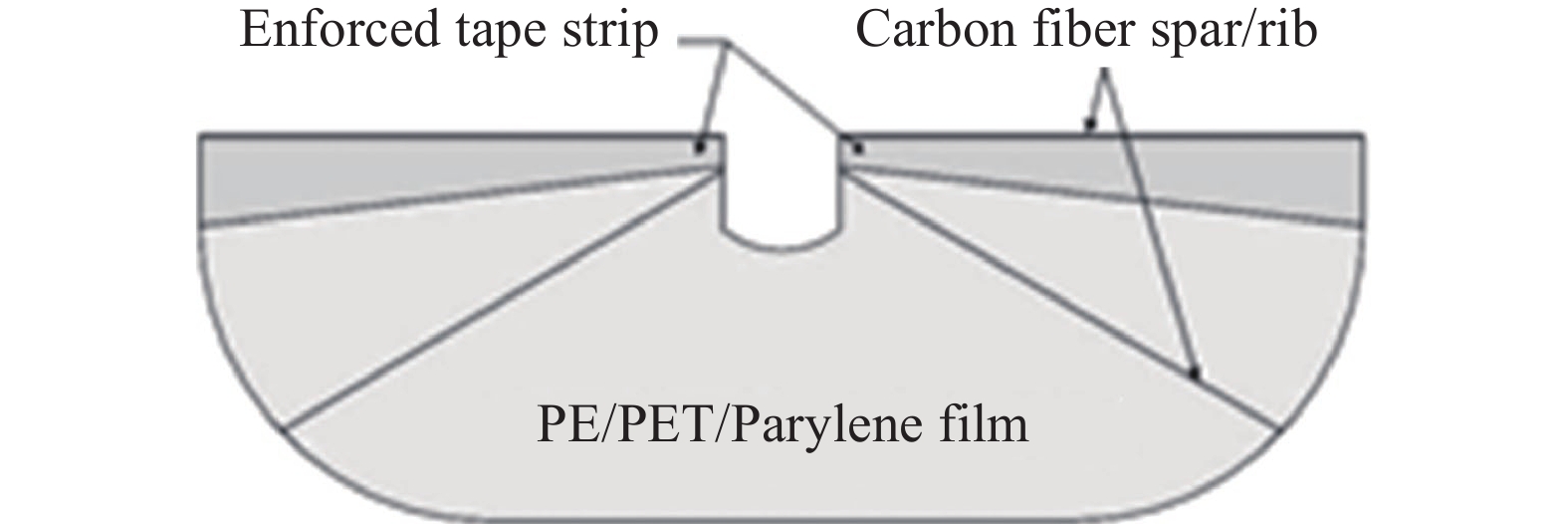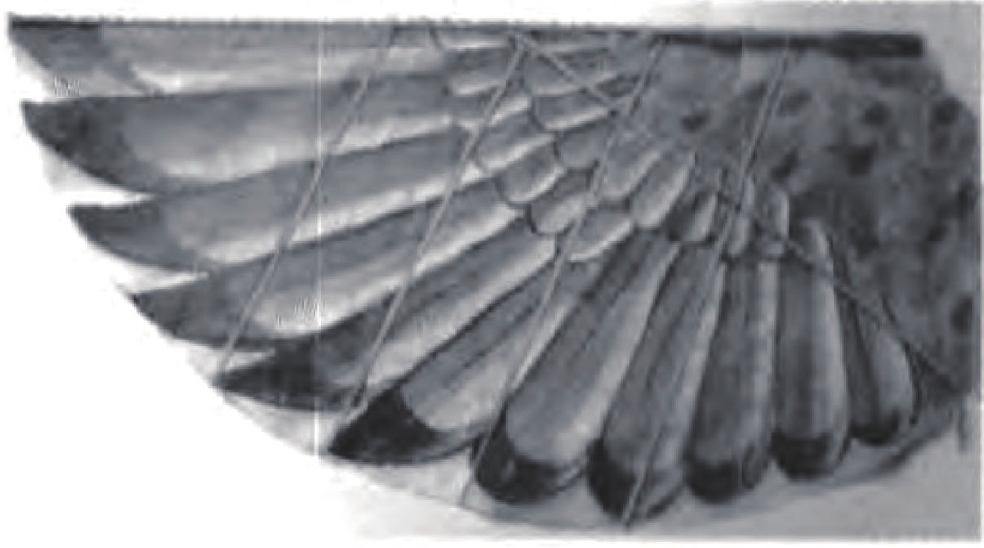Research progress on the wind tunnel experiment of a bionic flapping-wing aerial vehicle
-
摘要: 仿生撲翼飛行器的設計靈感來源于自然界中的鳥類、昆蟲和蝙蝠的飛行模式,通過機翼的主動運動來產生飛行所需要的升力和推力。仿生撲翼飛行器具有隱蔽性好、機動性強等優點,成為近年來國內外飛行器研究的重點。但是仿生撲翼飛行器研究涉及到低雷諾數、非定常空氣動力學等問題,與常規固定翼飛行器有很大的不同。仿生撲翼飛行器的研究方法一般分三種:氣動計算、風洞實驗和外場試飛。氣動計算方面,非定常氣動設計優化理論與方法目前仍存在不足;外場試飛的方法無法精確測量出飛行器復雜的氣動力,難以對飛行器進行定量分析研究;風洞實驗由于可以模擬飛行時的真實情況,獲得的數據較為真實可靠,且可以定量分析研究,成為目前研究仿生撲翼飛行器非常有效的方法。國內外研究人員利用風洞進行了大量針對仿生撲翼飛行器的實驗研究。在介紹了風洞組成和分類的基礎上,詳細闡述了仿鳥和仿昆蟲撲翼飛行器風洞實驗的研究現狀,最后對仿生撲翼飛行器風洞實驗未來可能的研究方向給出了建議。Abstract: “Flapping wing” is a mechanism observed in the flight of birds, insects, and bats. The lift and thrust for a flight are generated by the active movement of wings. It was first specifically designed by Da Vinci. With good concealment and maneuverability advantages, the bionic flapping wing has become the hotspot in the field of aerial vehicles at home and abroad in recent years. Due to its high degree of bionic appearance and ultra-low flight noise, the bionic flapping-wing aerial vehicle has important applications in the military and civilian fields. Because of a low Reynolds number, unsteady aerodynamics, and other issues, such as flexible deformation of the wing and so on, the study of a bionic flapping-wing aerial vehicle is quite different from that of a conventional fixed-wing aerial vehicle. The three methods used in the study of a flapping-wing aerial vehicle are aerodynamic calculations, wind tunnel experiments, and outside flight tests. In terms of aerodynamic calculation, the theory and method of an unsteady aerodynamic design and optimization are still inadequate at present. The outside flight test cannot accurately measure the complex aerodynamic force of the aerial vehicle and cannot conduct quantitative analysis as well as research on the aerial vehicle. As the wind tunnel experiment can simulate a real flight, the data obtained is more reliable, can be analyzed, and studied quantitatively. Therefore, the wind tunnel experiment has become an effective method to study a flapping-wing aerial vehicle. Researchers at home and abroad have conducted several experimental studies on a bionic flapping-wing aerial vehicle using a wind tunnel. This paper first introduced the composition and classification of a wind tunnel and then introduced the research status of the wind tunnel experiment, covering the bird-like and insect-like flapping-wing aerial vehicles in detail. Finally, this paper provided suggestions on the possible research directions to the wind tunnel experiment of the bionic flapping-wing aerial vehicle, such as research on how the multi-wing and the feather structure of the wings affect the performance of the bionic flapping-wing aerial vehicle.
-
表 1 熊超團隊和昂海松團隊實驗結果展示
Table 1. Experimental results of Xiong C’s team and Ang H S’s team
Team Variable Change of the angle of attack Change of flapping frequency Change of wind speed Xiong C Lift Increase Basically constant Increase Thrust Decrease Increase Decrease Ang H S Lift Increase Increase Increase Thrust Basically constant Increase Decrease www.77susu.com<span id="fpn9h"><noframes id="fpn9h"><span id="fpn9h"></span> <span id="fpn9h"><noframes id="fpn9h"> <th id="fpn9h"></th> <strike id="fpn9h"><noframes id="fpn9h"><strike id="fpn9h"></strike> <th id="fpn9h"><noframes id="fpn9h"> <span id="fpn9h"><video id="fpn9h"></video></span> <ruby id="fpn9h"></ruby> <strike id="fpn9h"><noframes id="fpn9h"><span id="fpn9h"></span> -
參考文獻
[1] Yin Z, He W, Zou Y, et al. Efficient formation of flapping-wing aerial vehicles based on wild geese queue effect. Acta Autom Sin, 2021, 47(6): 1355尹曌, 賀威, 鄒堯, 等. 基于“雁陣效應”的撲翼飛行機器人高效集群編隊研究. 自動化學報, 2021, 47(6):1355 [2] Xie Y J, Ye Z Y, Bai J, et al. Design of strain-gage balances for micro air vehicles and their experiments in wind tunnel. J Exp Fluid Mech, 2006, 20(1): 23 doi: 10.3969/j.issn.1672-9897.2006.01.006解亞軍, 葉正寅, 白靜, 等. 微型飛行器測量天平設計與風洞試驗. 實驗流體力學, 2006, 20(1):23 doi: 10.3969/j.issn.1672-9897.2006.01.006 [3] Xiong C, Song B F. Experimental investigation of aerodynamic characteristics of flapping-wing MAV in wind tunnel. Sci Technol Eng, 2007, 7(11): 2576 doi: 10.3969/j.issn.1671-1815.2007.11.027熊超, 宋筆鋒. 微型撲翼飛行器氣動機理風洞試驗研究. 科學技術與工程, 2007, 7(11):2576 doi: 10.3969/j.issn.1671-1815.2007.11.027 [4] Katzmayr R. Effect of periodic changes of angle of attack on behavior of airfoils. NACA, 1922: 147 [5] Pennycuick C J. A wind-tunnel study of gliding flight in the pigeon Columba livia. J Exp Biol, 1968, 49(3): 509 doi: 10.1242/jeb.49.3.509 [6] Fu P. Research on Wind Tunnel Experimental Method and Application of Flapping-Wing Micro Air Vehicle [Dissertation]. Xi’an: Northwestern Polytechnical University, 2017付鵬. 微型撲翼飛行器風洞實驗方法與應用研究[學位論文]. 西安: 西北工業大學, 2017 [7] Rojratsirikul P, Wang Z, Gursul I. Effect of pre-strain and excess length on unsteady fluid-structure interactions of membrane airfoils. J Fluids Struct, 2010, 26(3): 359 doi: 10.1016/j.jfluidstructs.2010.01.005 [8] He D X. Wind Tunnel Balance. Beijing: National Defense Industry Press, 2003賀德馨. 風洞天平. 北京: 國防工業出版社, 2003 [9] Qian A W, Zhao N. Research status of lift test device for flapping wing aerial vehicle. Sci Technol Innov, 2019(18): 53 doi: 10.3969/j.issn.1673-1328.2019.18.030錢愛文, 趙妞. 撲翼飛行器升力測試裝置研究現狀. 科學技術創新, 2019(18):53 doi: 10.3969/j.issn.1673-1328.2019.18.030 [10] Fu Q, Zhang S Y, Wang J B, et al. Indoor fixed-height control for bio-inspired flapping-wing aerial vehicles based on offboard monocular vision. Chin J Eng, 2020, 42(2): 249付強, 張樹禹, 王久斌, 等. 基于外部單目視覺的仿生撲翼飛行器室內定高控制. 工程科學學報, 2020, 42(2):249 [11] He W, Ding S Q, Sun C Y. Research progress on modeling and control of flapping-wing air vehicles. Acta Autom Sin, 2017, 43(5): 685賀威, 丁施強, 孫長銀. 撲翼飛行器的建模與控制研究進展. 自動化學報, 2017, 43(5):685 [12] Fu Q, Chen X Y, Zheng Z L, et al. Research progress on visual perception system of bionic flapping-wing aerial vehicles. Chin J Eng, 2019, 41(12): 1512付強, 陳向陽, 鄭子亮, 等. 仿生撲翼飛行器的視覺感知系統研究進展. 工程科學學報, 2019, 41(12):1512 [13] Chen Y F, Zhao H C, Mao J, et al. Controlled flight of a microrobot powered by soft artificial muscles. Nature, 2019, 575(7782): 324 doi: 10.1038/s41586-019-1737-7 [14] Yang W Q, Wang L G, Song B F. Dove: A biomimetic flapping-wing micro air vehicle. Int J Micro Air Veh, 2018, 10(1): 70 doi: 10.1177/1756829317734837 [15] He W, Mu X X, Zhang L, et al. Modeling and trajectory tracking control for flapping-wing micro aerial vehicles. IEEE/CAA J Autom Sin, 2021, 8(1): 148 doi: 10.1109/JAS.2020.1003417 [16] Pan E Z, Liang X, Xu W F. Development of vision stabilizing system for a large-scale flapping-wing robotic bird. IEEE Sens J, 2020, 20(14): 8017 doi: 10.1109/JSEN.2020.2981173 [17] Zhang Y L, Sun M. Erratum to: Dynamic flight stability of hovering model insects: Theory versus simulation using equations of motion coupled with Navier-Stokes equations. Acta Mech Sin, 2011, 27(2): 308 doi: 10.1007/s10409-011-0454-8 [18] Tubaro P L. A comparative study of aerodynamic function and flexural stiffness of outer tail feathers in birds. J Avian Biol, 2003, 34(3): 243 doi: 10.1034/j.1600-048X.2003.03084.x [19] Ang H S, Zeng R, Duan W B, et al. Aerodynamic experimental investigation for mechanism of lift and thrust of flexible flapping-wing MAV. J Aerosp Power, 2007, 22(11): 1838 doi: 10.3969/j.issn.1000-8055.2007.11.010昂海松, 曾銳, 段文博, 等. 柔性撲翼微型飛行器升力和推力機理的風洞試驗和飛行試驗. 航空動力學報, 2007, 22(11):1838 doi: 10.3969/j.issn.1000-8055.2007.11.010 [20] Mazaheri K, Ebrahimi A. Experimental investigation on aerodynamic performance of a flapping wing vehicle in forward flight. J Fluids Struct, 2011, 27(4): 586 doi: 10.1016/j.jfluidstructs.2011.04.001 [21] Tobalske B, Dial K. Flight kinematics of black-billed magpies and pigeons over a wide range of speeds. J Exp Biol, 1996, 199: 263 doi: 10.1242/jeb.199.2.263 [22] Park K J, Rosén M, Hedenström A. Flight kinematics of the barn swallow (Hirundo rustica) over a wide range of speeds in a wind tunnel. J Exp Biol, 2001, 204(Pt 15): 2741 [23] Xiong C. Analysis and Design Method Research of Tail Fin of Miniature Flapping Wing Aerial Vehicle [Dissertation]. Xi’an: Northwestern Polytechnical University, 2007熊超. 微型撲翼飛行器尾翼的分析與設計方法研究[學位論文]. 西安: 西北工業大學, 2007 [24] Li X Z. Aerodynamic Analysis of Flexible Wing and Tail with Multi-Segment Flapping Vehicle [Dissertation]. Tianjin: Civil Aviation University of China, 2018李喜喆. 多段仿生撲翼機柔性翅翼及尾翼氣動分析[學位論文]. 天津: 中國民航大學, 2018 [25] Huang C, Li W B, Zhao W K, et al. Establishment and research of flexible tail dynamics model of flapping-wing aircraft. J Ordnance Equip Eng, 2020, 41(5): 9 doi: 10.11809/bqzbgcxb2020.05.003黃燦, 李文彬, 趙衛凱, 等. 撲翼飛行器柔性尾翼動力學模型的建立與研究. 兵器裝備工程學報, 2020, 41(5):9 doi: 10.11809/bqzbgcxb2020.05.003 [26] Lee J S, Kim J K, Han J H, et al. Periodic tail motion linked to wing motion affects the longitudinal stability of ornithopter flight. J Bionic Eng, 2012, 9(1): 18 doi: 10.1016/S1672-6529(11)60093-0 [27] Tsai B J, Fu Y C. Design and aerodynamic analysis of a flapping-wing micro aerial vehicle. Aerosp Sci Technol, 2009, 13(7): 383 doi: 10.1016/j.ast.2009.07.007 [28] Su J Y, Yang J T. Analysis of the aerodynamic force in an eye-stabilized flapping flyer. Bioinspir Biomim, 2013, 8(4): 046010 doi: 10.1088/1748-3182/8/4/046010 [29] Zhang J M. “Father of Aviation” Zhukovsky’s growth road. Technol Wind, 2015(8): 2 doi: 10.3969/j.issn.1671-7341.2015.08.002張家銘. “航空之父”茹科夫斯基的成長之路. 科技風, 2015(8):2 doi: 10.3969/j.issn.1671-7341.2015.08.002 [30] Ashraf M A, Young J, Lai J C S. Reynolds number, thickness and camber effects on flapping airfoil propulsion. J Fluids Struct, 2011, 27(2): 145 doi: 10.1016/j.jfluidstructs.2010.11.010 [31] Unger R, Haupt M C, Horst P, et al. Fluid-structure analysis of a flexible flapping airfoil at low Reynolds number flow. J Fluids Struct, 2012, 28: 72 doi: 10.1016/j.jfluidstructs.2011.08.009 [32] Cai C R. Aerodynamic Performance Research of Bionic Wing Based on Pigeon Wings [Dissertation]. Changchun: Jilin University, 2018蔡常睿. 基于信鴿翅膀的仿生機翼氣動性能研究[學位論文]. 長春: 吉林大學, 2018 [33] Shi J T, Hua X, Wang H W, et al. Based on imitation of seagulls wings configuration wing aerodynamic performance analysis. Mech Sci Technol Aerosp Eng, 2017, 36(Suppl 1): 13史繼拓, 華欣, 王宏偉, 等. 基于仿海鷗翅翼構型的機翼氣動性能分析. 機械科學與技術, 2017, 36(增刊1): 13 [34] Shao L M, Song B F, Xiong C, et al. Experimental investigation of flapping-wing MAV in wind tunnel. Acta Aeronaut et Astronaut Sin, 2007, 28(2): 275 doi: 10.3321/j.issn:1000-6893.2007.02.004邵立民, 宋筆鋒, 熊超, 等. 微型撲翼飛行器風洞試驗初步研究. 航空學報, 2007, 28(2):275 doi: 10.3321/j.issn:1000-6893.2007.02.004 [35] Zhang Y F, Li Y, Tian W J. Effects of flapping amplitude angle on aerodynamic force of flapping wing micro air vehicle. Mech Eng Autom, 2019(1): 18 doi: 10.3969/j.issn.1672-6413.2019.01.007張亞鋒, 李郁, 田衛軍. 撲動幅值角對仿生撲翼氣動力特性的影響. 機械工程與自動化, 2019(1):18 doi: 10.3969/j.issn.1672-6413.2019.01.007 [36] Li K K, Chen W W. Variable stiffness design of flapping wings and its effects on lift and thrust. Acta Aeronaut et Astronaut Sin, 2020, 41(11): 423785李康康, 陳巍巍. 撲翼的變剛度設計及其對升力和推力的影響. 航空學報, 2020, 41(11):423785 [37] Shi C M, Nie X F, Zhou X M. Wind tunnel experimental study on the effect of tandem wings on the propulsion performance of flapping wing aerial vehicle // Celebration of the 60th Anniversary of the Chinese Society of Mechanics. Beijing: 2017: 972石成明, 聶小芳, 周襲明. 串列翼對撲翼飛行器推進性能影響的風洞實驗研究//慶祝中國力學學會成立60周年大會論文集. 北京, 2017: 972 [38] Warkentin J, DeLaurier J. Experimental aerodynamic study of tandem flapping membrane wings. J Aircr, 2007, 44(5): 1653 doi: 10.2514/1.28160 [39] Fu P, Song B F, Liang S R, et al. An experimental research about the characteristics of thrust and power of FMAV. J Northwest Polytech Univ, 2016, 34(6): 976 doi: 10.3969/j.issn.1000-2758.2016.06.008付鵬, 宋筆鋒, 梁少然, 等. 撲翼的推力特性與功率特性的實驗研究. 西北工業大學學報, 2016, 34(6):976 doi: 10.3969/j.issn.1000-2758.2016.06.008 [40] Dickinson M H. Wing rotation and the aerodynamic basis of insect flight. Science, 1999, 284(5422): 1954 doi: 10.1126/science.284.5422.1954 [41] Jin X Y, Yan J P, Zhou J H. Experimental research on the flexible wing and its theoretical explanation for the bionics flapping aerocraft. China Mech Eng, 2007, 18(9): 1028 doi: 10.3321/j.issn:1004-132X.2007.09.006金曉怡, 顏景平, 周建華. 仿生撲翼飛行機器人柔性翅試驗研究及其理論解釋. 中國機械工程, 2007, 18(9):1028 doi: 10.3321/j.issn:1004-132X.2007.09.006 [42] Wootton R J. The mechanical design of insect wings. Sci Am, 1990, 263(5): 114 doi: 10.1038/scientificamerican1190-114 [43] Zeng L J, Song D Q, Hao Q. Mechanism on the wing kinematics of insects. Opt Technol, 1999, 25(6): 18 doi: 10.3321/j.issn:1002-1582.1999.06.004曾理江, 宋德強, 郝群. 昆蟲運動機理的研究. 光學技術, 1999, 25(6):18 doi: 10.3321/j.issn:1002-1582.1999.06.004 [44] Shang J K, Combes S A, Finio B M, et al. Artificial insect wings of diverse morphology for flapping-wing micro air vehicles. Bioinspir Biomim, 2009, 4(3): 036002 doi: 10.1088/1748-3182/4/3/036002 [45] Muniappan A, Baskar V, Duriyanandhan V. Lift and thrust characteristics of flapping wing micro air vehicle (MAV) // 43rd AIAA Aerospace Sciences Meeting and Exhibit. Reno, 2005: 1055 [46] Ryu S, Kwon U, Kim H J. Autonomous flight and vision-based target tracking for a flapping-wing MAV // 2016 IEEE/RSJ International Conference on Intelligent Robots and Systems (IROS). Daejeon, 2016: 5645 [47] Lu G T. Aerodynamic Performance Analysis of Four-Wing Flapping Aircraft [Dissertation]. Tianjin: Civil Aviation University of China, 2019陸冠廷. 四翼撲翼機氣動性能分析[學位論文]. 天津: 中國民航大學, 2019 [48] Nakata T, Liu H, Tanaka Y, et al. Aerodynamics of a bio-inspired flexible flapping-wing micro air vehicle. Bioinspir Biomim, 2011, 6(4): 045002 doi: 10.1088/1748-3182/6/4/045002 [49] Yang L J, Kao A, Hsu C K. Wing stiffness on light flapping micro aerial vehicles. J Aircr, 2012, 49(2): 42 [50] Okamoto M, Yasuda K, Azuma A. Aerodynamic characteristics of the wings and body of a dragonfly. J Exp Biol, 1996, 199(pt 2): 281 [51] Vogel S. Flight in Drosophila: II. Aerodynamic characteristics of fly wing sand wing models. I. J Exp Biol, 1967, 46(3): 431 [52] Zhang F L. Experimental Research on the Transmission System of Fly-Like Flapping Wing Micro Air Vehicle [Dissertation]. Dalian: Dalian University of Technology, 2016張福梁. 仿蠅類撲翼微飛行器傳動系統的實驗研究[學位論文]. 大連: 大連理工大學, 2016 [53] Feng B B, Chen D R, Wang J D, et al. Bionic research on bird feather for drag reduction. Adv Mech Eng, 2015, 7(2): 849294 doi: 10.1155/2014/849294 [54] Hord K, Liang Y S. Numerical investigation of the aerodynamic and structural characteristics of a corrugated airfoil. J Aircr, 2012, 49(3): 749 doi: 10.2514/1.C031135 [55] Kim W K, Ko J H, Park H C, et al. Effects of corrugation of the dragonfly wing on gliding performance. J Theor Biol, 2009, 260(4): 523 doi: 10.1016/j.jtbi.2009.07.015 [56] Levy D E, Seifert A. Simplified dragonfly airfoil aerodynamics at Reynolds numbers below 8000. Phys Fluids, 2009, 21(7): 071901 doi: 10.1063/1.3166867 -





 下載:
下載:
